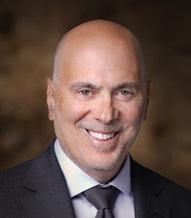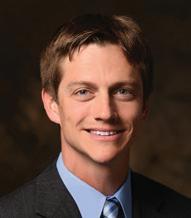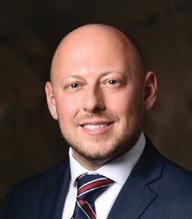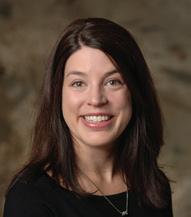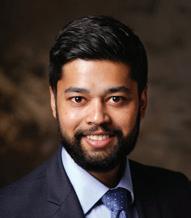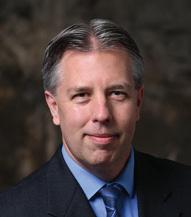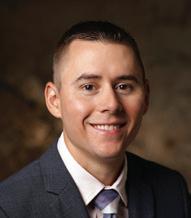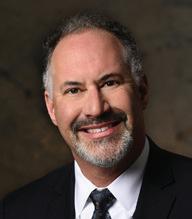Program notes by David Jensen
SAMUEL BARBER
Born 9 March 1910; West Chester, Pennsylvania
Died 23 January 1981; New York City, New York
Overture to The School for Scandal, Opus 5
Composed: 1931
First performance: 30 August 1933; Alexander Smallens, conductor; Philadelphia Orchestra
Last MSO performance: 7 February 2015; Andrew Litton, conductor
Instrumentation: 2 flutes; piccolo; 2 oboes; English horn; 2 clarinets; bass clarinet; 2 bassoons; 4 horns; 3 trumpets; 3 trombones; tuba; timpani; percussion (bass drum, cymbals, glockenspiel, suspended cymbals, triangle); harp; celesta; strings
Approximate duration: 8 minutes
Samuel Barber was determined to build a life for himself as an artist from the very beginning. He had his first piano lesson at age six and penned his first composition a year later, but his parents, raising him in the culturally conservative suburbs of Philadelphia, were committed to the idea of his being a typically gregarious, football-playing American boy — so much so that he was moved to draft a decidedly unambiguous note for them when he was only eight or nine years old: “Dear Mother: I have written this to tell you my worrying secret. Now don’t cry when you read it because it is neither yours nor my fault. … To begin with I was not meant to be an athlet [sic]. I was meant to be a composer, and will be I’m sure.”
A child prodigy, he was admitted to the Curtis Institute of Music at the age of 14 as a member of its first class in 1924, where his talents blossomed. He studied piano with George Boyle and Isabelle Vengerova, voice with Emilio de Gogorza (he even considered, for a time, a career as a professional baritone), and conducting with the legendary Fritz Reiner, but it became evident during the course of his eight-year tenure that he was cultivating an inimitable personality as a composer. Writing under the aegis of Italian composer Rosario Scalero, Barber’s proclivity for broad, lyrical melodies, shrewd handling of dissonance, and careful application of instrumental color came to define his artistic voice.
He was awarded the Joseph H. Bearns Prize in Music from Columbia University in 1928 for a violin sonata (now lost to posterity), and the prize money allowed him to visit Italy for the first time. He returned frequently in subsequent years, and it was there in the summer of 1931, under Scalero’s tutelage, that the Overture to The School for Scandal took shape.
A lifelong litterateur, Barber’s music was not actually intended to precede a performance of Richard Brinsley Sheridan’s play of the same name, but rather reflect its quick-witted, acerbic character in musical terms. Classical in its form and affect, Barber’s luminous orchestral timbres evoke the chattering, gossiping drawing-room dramas of Sheridan’s comedy of manners, culminating in a dazzling fugato crowned by an outburst of orchestral laughter. The overture was the first of Barber’s works to be performed by a major orchestra and the second to earn him the Bearns prize. Having again used his winnings to visit Italy with Gian Carlo Menotti — a fellow student at Curtis and his romantic partner of more than 40 years — he was, ironically, unable to attend the world premiere that launched his career.
SERGEI PROKOFIEV
Born 27 April 1891; Sontsovka, Russia (now Ukraine)
Died 5 March 1953; Moscow, Russia
Concerto No. 3 in C major for Piano and Orchestra, Opus 26
Composed: 1911 – October 1921
First performance: 16 December 1921; Frederick Stock, conductor; Sergei Prokofiev, piano; Chicago Symphony Orchestra
Last MSO performance: 18 January 2020; Ken-David Masur, conductor; Sergei Babayan, piano
Instrumentation: 2 flutes (2nd doubling on piccolo); 2 oboes; 2 clarinets; 2 bassoons; 4 horns; 2 trumpets; 3 trombones; timpani; percussion (bass drum, castanets, cymbals, tambourine); strings
Approximate duration: 27 minutes
In the summer of 1902, Sergei Taneyev, director of the Moscow Conservatory, arranged for Reinhold Glière to visit the provincial village of Sontsovka to tutor a young boy that had already, by the age of 11, composed two operas. His first lessons in composition provided the child with a vital grounding in the principles of tonal harmony, classical form, and orchestration, but the wunderkind was already eagerly experimenting, writing dozens of so-called “little ditties” for the piano that toyed with unconventional meters, curious dissonances, and peculiar metric impulses — all hallmarks of a mature style that would one day set Sergei Prokofiev apart as an aggressively avant-garde artist.
Arriving at the Saint Petersburg Conservatory in September 1904, he was soon regarded as an arrogant, rebellious enfant terrible. To his disappointment, he found his coursework tedious and restrictive, and he graduated from the conservatory’s composition class with only average marks. Uncertain of his future as a composer, he dedicated himself to his development as a pianist, and lessons with Anna Yesipova tamed his tough, mechanical approach and cultivated his lyrical sensibilities. Within a few years, he was earning acclaim as a cutting-edge modernist in Saint Petersburg’s musical circles, supporting himself with performances and publications of his own music.
But he was coming of age at a tumultuous moment in Russian history. Following the February Revolution of 1917, he fled his homeland, where his star had been steadily rising, and arrived in America, dismayed by his competition on the international stage — finding himself compared, as a composer, with Igor Stravinsky, and as a pianist with Sergei Rachmaninoff. He poured his creative energies into a new opera, The Love for Three Oranges, but the effort it required cost him dearly. Finding himself in financial crisis when its premiere fell through, he retreated to Paris. Realizing he would need to compose something that illustrated his talents as both performer and composer, he spent the summer of 1921 on the coast of Brittany, assembling a new concerto from musical fragments dating back to his student years.
Unlike his first two piano concerti, the third was the fruit of an unusually lengthy genesis. The two main themes of the first movement (the first a plaintive tune sounded by a solo clarinet; the second a sarcastic, wheedling oboe accompanied by castanets) were sketched by 1916. The gavotte that forms the basis for five distinct variations — ranging from the lyrical to the downright sinister — in the middle movement dates from 1913, and part of the ensuing “argument” between soloist and orchestra in the third movement derived from an abandoned string quartet of 1918. The resulting fusion remains Prokofiev’s most popular concerto, a steely, highly rhythmic, assertive display of technical cunning and effortless harmonic manipulation.
PIOTR ILYICH TCHAIKOVSKY
Born 7 May 1840; Votkinsk, Russia
Died 6 November 1893; Saint Petersburg, Russia
Symphony No. 4 in F minor, Opus 36
Composed: May 1877 – 7 January 1878
First performance: 22 February 1878; Nikolai Rubinstein, conductor; Russian Musical Society
Last MSO performance: 21 September 2019; Ken-David Masur, conductor
Instrumentation: 2 flutes; piccolo; 2 oboes; 2 clarinets; 2 bassoons; 4 horns; 2 trumpets; 3 trombones; tuba; timpani; percussion (bass drum, cymbals, triangle); strings
Approximate duration: 44 minutes
In the spring of 1877, Tchaikovsky had begun receiving letters from Antonina Miliukova (supposedly a former pupil of his at the Moscow Conservatory), who, shortly after declaring her love for him, threatened suicide if he refused to see her. Even after meeting her family (whom he found impossibly grating) and assuring them that he could not love her, he married her that summer, hoping that the union would serve as a convenient subterfuge to the truth of his sexuality. It would prove to be the most disastrous miscalculation of his life. The marriage failed almost immediately and precipitated in Tchaikovsky a psychological crisis — following a botched suicide attempt, he arrived in Saint Petersburg that October, teetering on the edge of insanity, and at a doctor’s recommendation, his brother Anatoly helped him to separate from his wife completely.
His work on the fourth symphony that year, a deeply personal document of his suffering, allowed for a torrential outpouring of emotion, and newfound patronage from the wealthy widow Nadezhda von Meck provided much-needed financial stability and vital psychological support. She had begun subsidizing Tchaikovsky’s efforts earlier that year in exchange for his correspondence, and their letters provide a remarkable record not only of the deleterious effect the short-lived affair had had on Tchaikovsky, but the generative process and narrative content of the fourth symphony. Admitting a link between the programmatic heart of Beethoven’s fifth — humanity’s struggle against the inexorable tide of fate — he described the opening fanfare in explicit terms:
This is Fate, that inevitable force which checks our aspirations towards happiness ere they reach the goal, which watches jealously lest our peace and bliss should be complete and cloudless — a force which, like the sword of Damocles, hangs perpetually over our heads and is always embittering the soul. This force is inescapable and invincible. There is no other course but to submit and inwardly lament.
The first movement, a colossal sonata form, accounts for almost half of the symphony’s total length. The ghostly, waltz-like theme that emerges constantly hesitates, but “Fate” interrupts, first before the development and again before the coda: “so all life is but a continual alternation between grim truth and fleeting dreams of happiness.” The plaintive tune introduced by the oboe in the second movement, which “expresses another phase of suffering … A long procession of old memories,” rises to a fever pitch of emotional urgency before receding into melancholy.
In the scherzo that follows, the strings play pizzicato throughout its entirety as “capricious arabesques, intangible forms” give way to “the picture of a tipsy peasant and a street song,” reminiscent of Tchaikovsky’s finest balletic music. The final movement, painting the scene of a “rustic holiday,” incorporates Russian folk song — cut short once again by “Fate,” completing the cycle initiated at the outset — and arrives at a sublime pinnacle of exuberant bombast: “And will you still say that all the world is immersed in sorrow? Happiness does exist, simple and unspoilt. Be glad in others’ gladness. This makes life possible.”
2024.25 SEASON
KEN-DAVID MASUR
Music Director
Polly and Bill Van Dyke
Music Director Chair
EDO DE WAART
Music Director Laureate
BYRON STRIPLING
Principal Pops Conductor
Stein Family Foundation Principal Pops Conductor Chair
RYAN TANI
Assistant Conductor
CHERYL FRAZES HILL
Chorus Director
Margaret Hawkins Chorus Director Chair
TIMOTHY J. BENSON
Assistant Chorus Director
FIRST VIOLINS
Jinwoo Lee, Concertmaster, Charles and Marie Caestecker Concertmaster Chair
Ilana Setapen, First Associate Concertmaster, Thora M. Vervoren First Associate Concertmaster Chair
Jeanyi Kim, Associate Concertmaster
Alexander Ayers
Autumn Chodorowski
Yuka Kadota
Sheena Lan**
Elliot Lee**
Dylana Leung
Kyung Ah Oh
Lijia Phang
Yuanhui Fiona Zheng
SECOND VIOLINS
Jennifer Startt, Principal, Andrea and Woodrow Leung Second Violin Chair
Ji-Yeon Lee, Assistant Principal (2nd chair)
John Bian, Assistant Principal (3rd chair)*
Hyewon Kim, Acting Assistant Principal (3rd chair)
Glenn Asch
Lisa Johnson Fuller
Clay Hancock
Paul Hauer
Janis Sakai**
Mary Terranova
VIOLAS
Robert Levine, Principal, Richard O. and Judith A. Wagner Family Principal Viola Chair
Samantha Rodriguez, Acting Assistant Principal (2nd chair), Friends of Janet F. Ruggeri Viola Chair
Alejandro Duque, Acting Assistant Principal (3rd chair)
Elizabeth Breslin
Georgi Dimitrov
Nathan Hackett
Erin H. Pipal
CELLOS
Susan Babini, Principal, Dorothea C. Mayer Cello Chair
Shinae Ra, Assistant Principal (2nd chair)
Scott Tisdel, Associate Principal Emeritus
Madeleine Kabat
Peter Szczepanek
Peter J. Thomas
Adrien Zitoun
BASSES
Principal, Donald B. Abert Bass Chair
Andrew Raciti, Acting Principal
Nash Tomey, Acting Assistant Principal (2nd chair)
Brittany Conrad
Omar Haffar**
Paris Myers
HARP
Julia Coronelli, Principal, Walter Schroeder Harp Chair
FLUTES
Sonora Slocum, Principal, Margaret and Roy Butter Flute Chair
Heather Zinninger, Assistant Principal
Jennifer Bouton Schaub
PICCOLO
Jennifer Bouton Schaub
OBOES
Katherine Young Steele, Principal, Milwaukee Symphony League Oboe Chair
Kevin Pearl, Assistant Principal
Margaret Butler
ENGLISH HORN
Margaret Butler, Philip and Beatrice Blank English Horn Chair in memoriam to John Martin
CLARINETS
Todd Levy, Principal, Franklyn Esenberg Clarinet Chair
Jay Shankar, Assistant Principal, Donald and Ruth P. Taylor Assistant Principal Clarinet Chair
Besnik Abrashi
E-FLAT CLARINET
Jay Shankar
BASS CLARINET
Besnik Abrashi
BASSOONS
Catherine Van Handel, Principal, Muriel C. and John D. Silbar Family Bassoon Chair
Rudi Heinrich, Assistant Principal (3rd chair)
Beth W. Giacobassi
CONTRABASSOON
Beth W. Giacobassi
HORNS
Matthew Annin, Principal, Krause Family French Horn Chair
Krystof Pipal, Associate Principal
Dietrich Hemann, Andy Nunemaker
French Horn Chair
Darcy Hamlin
Scott Sanders
TRUMPETS
Matthew Ernst, Principal, Walter L. Robb Family Trumpet Chair
David Cohen, Associate Principal, Martin J. Krebs Associate Principal Trumpet Chair
Tim McCarthy, Fred Fuller Trumpet Chair
TROMBONES
Megumi Kanda, Principal, Marjorie Tiefenthaler
Trombone Chair
Kirk Ferguson, Assistant Principal
BASS TROMBONE
John Thevenet, Richard M. Kimball
Bass Trombone Chair
TUBA
Robyn Black, Principal, John and Judith Simonitsch Tuba Chair
TIMPANI
Dean Borghesani, Principal
Chris Riggs, Assistant Principal
PERCUSSION
Robert Klieger, Principal
Chris Riggs
PIANO
Melitta S. Pick Endowed Piano Chair
PERSONNEL
Antonio Padilla Denis, Director of Orchestra Personnel
Paris Myers, Hiring Coordinator
LIBRARIANS
Paul Beck, Principal Librarian, James E. Van Ess Principal Librarian Chair
Matthew Geise, Assistant Librarian & Media Archivist
PRODUCTION
Tristan Wallace, Production Manager/ Live Audio
Lisa Sottile, Production Stage Manager
* Leave of Absence 2024.25 Season
** Acting member of the Milwaukee Symphony Orchestra 2024.25 Season










